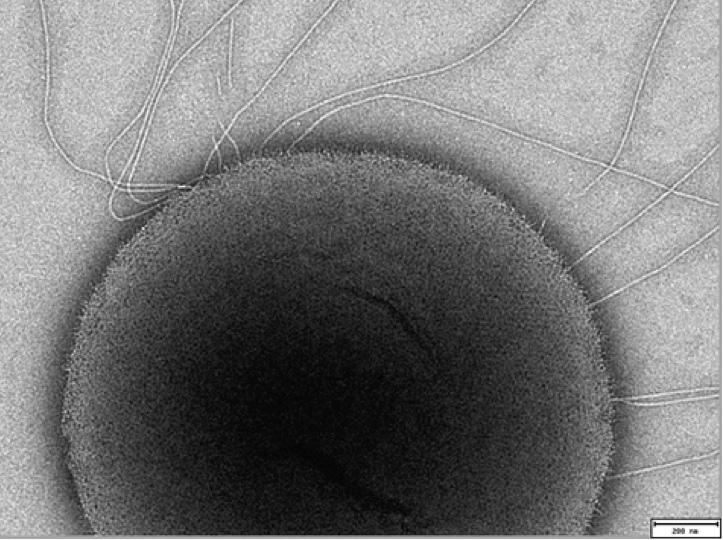Forty-two years after Carl Woese defined archaea as the third domain of life, scientists at the IGB are still learning about these ancient organisms in ways that could help us learn more about eukaryotes.
Over time, scientists have realized that archaea have close ancestral relationships to eukaryotes — the domain of life that includes animals, plants, and more.

“Everybody’s interested in the origin of eukaryotic cells because we’re eukaryotes,” said Rachel Whitaker, a professor of microbiology, member of the BCXT theme and leader of the IGOH theme at the IGB. “The more we can learn about archaea, the more we’ll understand about our own cells and what makes us unique.”
Whitaker and Changyi Zhang, a research scientist at the IGB, wanted to better understand the archaeal cell by studying Sulfolobus islandicus, an archaeal microorganism that is found in geothermal hot springs.
Their results, published in Nature Communications, give insight into archaea’s potential shared ancestry with eukaryotes and the evolutionary history of cells. Their research also overturns previously held beliefs about what S. islandicus requires for growth.
“One of the first questions is: what does it need in order to grow?” Whitaker said.
The researchers determined the essential genes— those that are critical for an organism’s growth and survival — of S. islandicus and then compared them to the essential genes of bacteria and eukaryotes to see if they could find genes that are shared between them.
In particular, they wanted to see if eukaryotes shared any essential genes with S. islandicus, as this could give insight into the origin of eukaryotes.
While they didn’t find any shared genes that hadn’t already been defined, they did find a set of genes that are both unique to archaea and essential for their growth. Now, they want to understand whether these genes are unique to archaea or whether they were present in a common ancestor of archaea and eukaryotes.
“There are two options. Either they were once shared by a common ancestor and lost by eukaryotes as they diverge from a common ancestor,” Whitaker said. “Or they’re new, and they’re innovations that happened in the archaeal cell that didn’t happen in the eukaryotic cell.”
If they can understand this better, they can further understand how archaea and eukaryotes diverged, and just how that process of evolution took place within the cell.
“Can you just evolve new functions?” Whitaker said. “What types of functions are the ones that you can evolve and change, that are essential, and what types of functions are the type you can lose?”
To study S. islandicus, a unique organism that grows in high temperatures, Zhang had to develop new tools to analyze its genome. These tools allowed him to make an unexpected discovery about the surface (S-) layer, the outer shell of archaeal cells that provides protection.
“It only has an S-layer surrounding the cell,” Zhang said. “If the cell loses the S-layer, it loses its protection against a lot of environmental stress.”
The consensus among scientists was that the S-layer was essential to Sulfolobus, but Zhang confirmed that it’s not. He said this came as a surprise, but they now have the tools to test how the archaeal cell functions with and without this outer shell.
“We think it might be really important in how the cell normally functions,” Whitaker said. “We know that they grow, but they look really different (without it). That gives us some ideas about what processes might be impacted, but we don’t know yet what they are.”
A better understanding of archaeal cells could help the scientific community learn more about functions of eukaryotic cells — many of which are not well understood. These functions can affect our cells’ health, and unhealthy cells can cause mutations and genome instability, which can cause cancer.
“Our hope is that, in better understanding the core pieces of those functions, we might be able to better understand those systems, and in doing that, better understand our own selves,” Whitaker said.
Whitaker and Zhang said that, since publishing their results, researchers from around the world have contacted them to request access to their data.
“The field of archaeal cell biology has really noticed this work . . . that’s great, coming from the IGB and from Illinois,” Whitaker said. “It’s reminding people that archaeal research is alive and well and really making big impacts here.”
